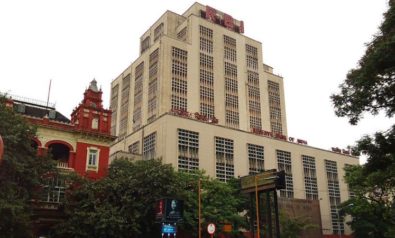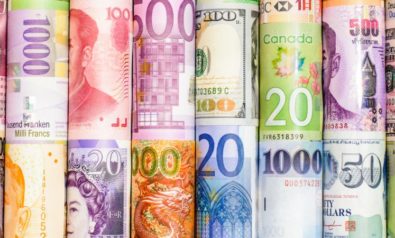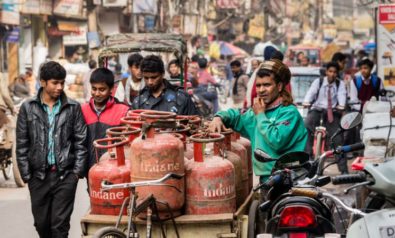With momentum on its side, the Indian economy finally has an opportunity to achieve its potential.
Background
Some may argue that the Indian economy has been in the limelight for the past 20 years, but this time it seems to be different. India’s economy was liberalized in 1991 in the aftermath of the Soviet Union’s collapse. Soon after, it left behind the Hindu rate of growth.
However, India stumbled again under the previous government. The United Progressive Alliance (UPA), led by the Congress Party, was mired in corruption scandals. Lower growth, coupled with a high inflation rate, made life hell for the poor who suffered inordinately because they could barely afford to buy enough food to keep body and soul together.
Along with corruption, red tape and populism hobbled the economy during the last ten years. Unsurprisingly, India’s overwhelmingly young voters booted out the Nehru clan, India’s de facto royal family, out of power.
Indian voters have great hopes from incumbent Prime Minister Narendra Modi, who entered office in 2014. It remains to be seen if he can inaugurate a new era of economic growth and create the millions of jobs India urgently needs.
India has huge strengths. It has a growing middle-class, a young population and an entrepreneurial society. Yet it has massive weaknesses too. It has decrepit infrastructure, rampant corruption, stifling red tape and obsolete colonial-era laws. Both Indians and foreigners are hoping that Modi can harness India’s strengths and overcome its weaknesses. On May 26, Modi completed one year in office and there is guarded optimism about the Indian economy.
In 2014-15, India’s gross domestic product (GDP) grew at 7.3% under the new method that has been adopted to calculate GDP. The media termed this uptick in growth the “Modi effect,” and it is certainly true that Modi’s victory infused confidence in the economy. This optimism was not entirely misplaced. During his time as chief minister of Gujarat from 2001-14, the state grew at an average of 10% per year. Now, Modi has to start delivering on his promise of development, jobs and growth.
Currently, the Indian economy has some tailwinds behind it. Foreign direct investment (FDI) increased by 27% to $30.9 billion in the fiscal year 2014-15. Foreign institutional investors put another $17.9 billion into India’s stock markets. Raghuram Rajan, the head of the Reserve Bank of India (RBI), has been sagacious in his monetary policy choices. Under Rajan, the RBI has curbed inflation and has started lowering interest rates this year.
Modi has begun certain flagship programs to also improve the life of the poorest Indians. The Pradhan Mantri Jan-Dhan Yojana initiative has aimed at the financial inclusion of millions. It made it as a Guinness World Record because of 18 million new bank accounts that were opened during August 23-29, 2014.
Despite the growth, Modi faces criticism. Many accuse him of failing to make tough decisions and attribute India’s economic growth to plain luck. Rahul Gandhi, the fourth-generation leader of the Congress Party, claims that Modi cares for the wealthy and not for the poor. Massive protests broke out when the government tried to push through the land acquisition bill. It aims to allow businesses in specific sectors to acquire land for critical development projects. Protesters are concerned that land owners will be unfairly displaced and provided inadequate compensation.
The environment is also a concern. Water pollution in India is high and so is air pollution in major urban areas. A recent report claimed that if air pollution were at levels permitted by legislation, then Indians on an average would live an extra 3.2 years.
Needless to say, inequity continues to be a concern in a historically stratified society. In particular, women face horrible discrimination. They still find it difficult to get jobs and loans. Rape and domestic abuse are common despite protest and outrage.
Yet India has more women leaders than the US and has companies that are world beaters. Indian talent is making waves in space, software and the arts. Is the Indian elephant about to stride where Asian tigers have gone before?
Why is the Indian Economy Relevant?
If India takes off, it will become the world’s third biggest economy by 2030. India is already the world’s biggest democracy. Its economic success will prove to the world that economy and economic dynamism are compatible. With its size and familiarity with the English language, India can be a bridge between dominant economies such as the US and the European Union and rising economies such as Bangladesh and Vietnam.
India’s economic story is relevant most of all to its own people. The hundreds of millions of malnourished and underemployed Indians have long yearned for a better life. Their hopes were dashed after independence but they have dared to dream again. India has not always been a poor country. As late as 1820, many estimate that its share of the world GDP was around 20%.
Now, India is starting to dream of getting rich again. Even if the dream comes half true, a large part of humanity will escape penury to live with greater dignity.
The views expressed in this article are the author’s own and do not necessarily reflect Fair Observer’s editorial policy.
Photo Credit: Radiokafka / Shutterstock.com
We bring you perspectives from around the world. Help us to inform and educate. Your donation is tax-deductible. Join over 400 people to become a donor or you could choose to be a sponsor.
For more than 10 years, Fair Observer has been free, fair and independent. No billionaire owns us, no advertisers control us. We are a reader-supported nonprofit. Unlike many other publications, we keep our content free for readers regardless of where they live or whether they can afford to pay. We have no paywalls and no ads.
In the post-truth era of fake news, echo chambers and filter bubbles, we publish a plurality of perspectives from around the world. Anyone can publish with us, but everyone goes through a rigorous editorial process. So, you get fact-checked, well-reasoned content instead of noise.
We publish 2,500+ voices from 90+ countries. We also conduct education and training programs on subjects ranging from digital media and journalism to writing and critical thinking. This doesn’t come cheap. Servers, editors, trainers and web developers cost money.
Please consider supporting us on a regular basis as a recurring donor or a sustaining member.
Support Fair Observer
We rely on your support for our independence, diversity and quality.
Will you support FO’s journalism?
We rely on your support for our independence, diversity and quality.















